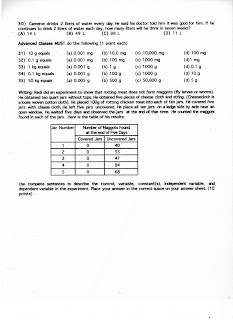Tuesday, 30 October and Wednesday, 31 October, 2007

This is home learning #1. Be sure to head your paper correctly (last name, first name, ID number, Block ___, Date, HL #1, all in the upper left hand corner to the right of the red line, on loose leaf paper). Write in blue or black ink or pencil. Answers only. Remember to title your paper Energy.
Using information from the novel The Missing 'Gator of Gumbo Limbo, videos, internet access and classroom discussions,
Students should be able to:
-read a novel to justify how the scientific process is used to solve a mystery.
-demonstrate energy conversions.
-critique the statement that energy is neither created or destroyed.
-compare and contrast potential and kinetic energy.
Our do now was a quick write: explain the difference between potential energy and kinetic energy.
Students then submitted their science fair plans. If you have lost your science fair papers, scroll down to October 10/11 blog to find copies. You MUST submit a plan prior to beginning your project.
Our home learning is from the Reading Essentials for Florida Grade 7 book. Answer question 2 on page 77. You can also find it at the top of this blog. Remember to head your papers correctly and record the answers only, in letter form.
We then read from the novel The Missing 'Gator of Gumbo Limbo, verifying how the scientific process can be used to solve mysteries.
We viewed BrainPop movies on work and forms of energy.
We then took notes, using the 3 column method from the Reading Essentials book, pages 73-76.
We spent the remainder of the class learning about energy conversions by doing a Glencoe virtual lab. You can find the link by visiting drgcdms.podomatic.com.





























